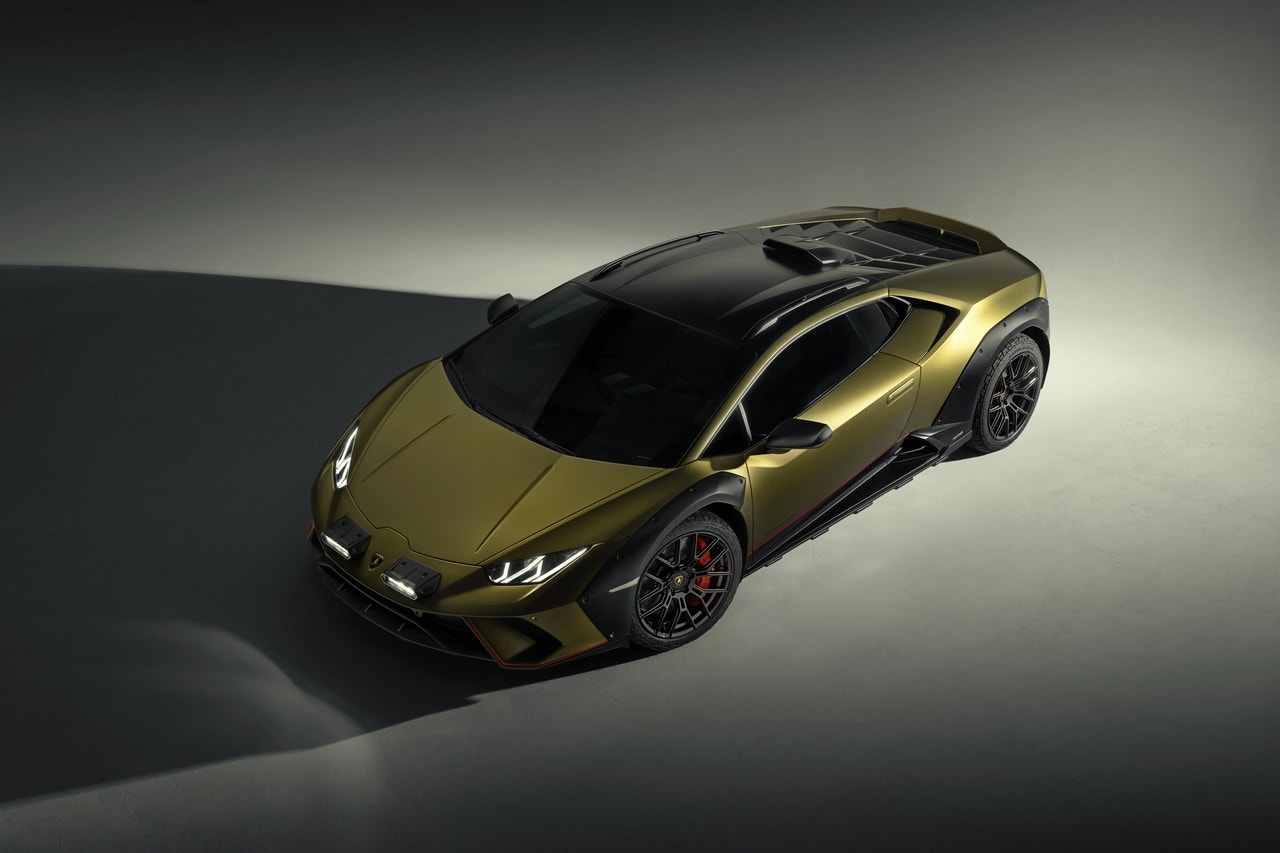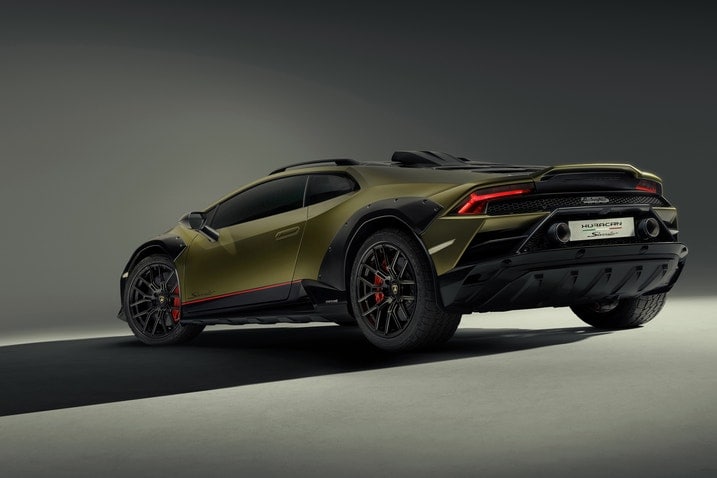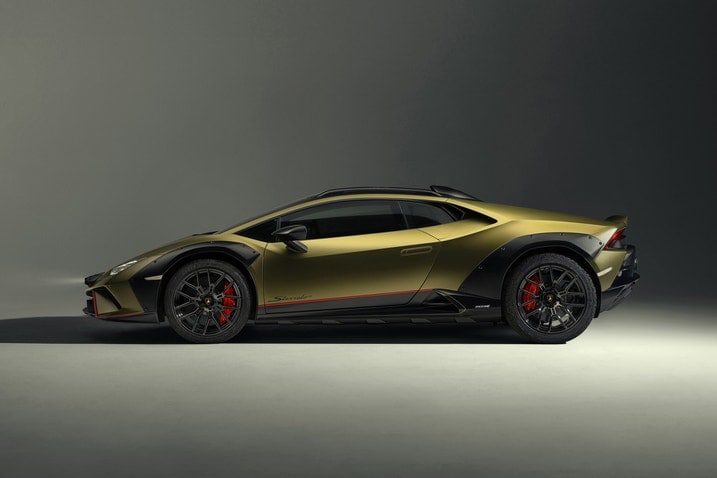- Lamborghini head of design Mitja Borkert says the Sterrato concept was conceived over dinner after a round of Urus testing.
- Borkert says details like aerodynamic features and rally lights presented a unique challenge.
- The Sterrato represents part of Lamborghini's research and development to test out new ideas.
Lamborghini Huracán Sterrato Head Designer Spills the Vino on the Process
Over dinner and "maybe a few glasses of wine," the design team dreamed up an off-roading supercar
Supercar maker Lamborghini is jumping on the off-roading bandwagon, which may sound odd. The Raging Bull doesn’t often find itself on dirt roads, preferring to stick to silky ribbons of asphalt. At least, not until the Sterrato. Lamborghini’s newest version of the Huracán is fit for roads previously untraveled and, according to the brand’s head of design Mitja Borkert, a few glasses of wine may have been involved.
“The idea is a beautiful story to be told,” Borkert told Edmunds. “We were having dinner in South Italy after testing the Urus on the Nardo test track. It was so fun to drive the Urus and we said, ‘Hey, why aren’t we combining this experience with a supercar?'"
Borkert imagined the Sterrato as a car for active, sporty people, expecting it to be fitted with roof racks for skis and snowboards. With a 1.7-inch lift above the Huracán Evo, the Sterrato is also wider, with 19-inch wheels wrapped in rally-ready Bridgestone Dueler AT002 all-terrain run-flat tires.
The Sterrato is powered by the same 5.2-liter V10 as the other Huracáns in the family, and in the Sterrato it's tuned to make 602 horsepower and 413 lb-ft of torque. A seven-speed dual-clutch transmission drives all four wheels electronically, versus the rear-wheel-drive setup of the road-hugging Huracán Tecnica. The new off-roading Huracán includes a rear mechanical self-locking differential, and Lamborghini says it will zip from 0 to 62 mph in 3.4 seconds.
With a top speed of 160 mph, which is way more than most people need, the Sterrato follows Lamborghini’s classic it’s-not-about-what-you-need-it’s-about-what-you-want attitude. Honestly, if you’re driving 160 mph on the dirt on a regular basis, you should think about pursuing a career in rally driving — we suggest going for the optional roll cage, too.
Since the Urus (which comes with a Terra driving mode to improve off-road performance) has been such a success for the brand, one might question why Lamborghini would need a rally car. Perhaps the better question is: Why not? Borkert said it was an obvious idea and it was just a matter of persuading the higher-ups that it could work.
“We were enthusiastic about it from the beginning, and it was kind of a motivator; [the Sterrato is] a boost machine for R&D,” Borkert said. “The biggest challenge was that it took a bit of time to convince everyone this was a cool idea.”
Starting with the brand's design DNA, Borkert said, the most important aspect is that a supercar in the Lamborghini family may be recognized by its silhouette. In that vein, the car is very close to the ground even with the lift.
Compared to the just-released Porsche 911 Dakar, which has the advantage of another inch or so off the ground, the Sterrato may be as able to handle rough environments. But most people won't care about that. Each of the highly customizable 1,499 limited-edition units is going to look fantastic on any road, and that's what Lamborghini owners really want.
Aerodynamics were also challenging for this car, Borkert said.
"Usually we design for speed, but during development we discovered we needed something on the rooftop to provide fresh air," the designer said. "The original position behind the side windows [as in other Huracán models] was catching too much dust. That’s why we went with the scoop on the roof."
The design team added beefed-up claddings painted with an optional finish typically used on tools such as a hammer.
"There are so many little details," Borkert said. "For example, the front lights require a covering in some markets [the U.S., for one]. We spent a lot of time developing a nice cover that can be unscrewed."
Keeping the total number of examples low gives the Sterrato an extra-exclusive feel that surpasses that of many of the models in Lamborghini's stable. It also gives the automaker room to test it widely and tweak it for the next version, which could very well be even wilder than this one.
"Every project inspires another one," Borkert said. "When you enter our design center, you’ll find concept cars, student projects, and the future. For sure, maybe a detail idea we had five years ago or a fender idea might inspire us for a project we haven't thought about yet."
Edmunds says
If you're listening, Lamborghini, we're more than happy to help you put the Huracán Sterrato through its paces. We'll wait by the phone.








 by
by